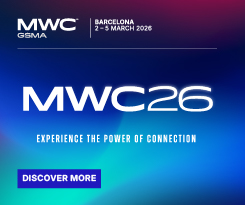
Photo: Translink
Vancouver to quadruple rapid transit network by 2050
01 February 2022
by Christopher Carey
Vancouver’s transit operator TransLink has released its 2050 Regional Transportation Strategy, which includes plans to quadruple the rapid transit network with 300 kilometres of new lines by 2050.
The strategy – which has been approved by the Mayors’ Council on Regional Transportation and TransLink’s board of directors – outlines over 100 actions to make transit more affordable, reliable and environmentally sustainable.
In addition to the 300 kilometres of rapid transit lines which will consist of bus, light rail, subway, or SkyTrain routes, the authority will build an 850-kilometre segregated bikeway network and promote the use of electric and shared vehicles.
“Quality transportation is the backbone of a quality society, because how we move impacts every facet of urban life,” said Kevin Quinn, CEO, TransLink.
“I’m proud that Transport 2050 will help make transportation more sustainable, reliable, convenient, safe, and affordable for decades.
“After the largest engagement in our history [it] is truly a strategy created both by those and for those who call Metro Vancouver home.”
Public engagement
During a three-phase public engagement process that began in 2019, the operator hosted more than 350 in-person or virtual events that resulted in over 160,000 conversations, 38,000 surveys, and 4,000 ideas.
Over 500 stakeholder groups in 27 different municipalities were consulted during the process.
“With input from thousands of regional residents, Transport 2050 is an exciting vision for the future of transportation and connected communities in Metro Vancouver,” said George Heyman, Minister of Environment and Climate Change Strategy, British Columbia Government.
“A better, cleaner transportation system supports liveable communities, and aligns with our CleanBC Roadmap calling for increased electrification of our transit fleet, expanded opportunities for active transportation and other transportation initiatives to meet our climate targets.”
Climate
The transit operator recently announced plans to achieve a 45 percent reduction in greenhouse gas emissions (GHGs) by 2030 – when compared to 2010 levels – through its Climate Action Strategy.
The strategy outlines a raft of measures which include plans for a fully zero-emission bus fleet by 2040 and the creation of a more resilient system that can better withstand climate impacts.
Road-based transportation – including personal, commercial, industrial and public transit vehicles – represent the largest single source of GHGs in the region, accounting for 35 per cent of all emissions.
While TransLink’s GHGs account for just 2.7 per cent of those emissions, the operator wants to accelerate action on reducing its carbon footprint.
Other objectives in the strategy include: the introduction of over 400 new battery-electric buses in service by 2030; a zero-emission fully electric SeaBus service by 2030; equipping 100 percent of its bus fleet with air conditioning by 2028; building and operating a new transit centre in the Marpole area of Vancouver that will house over 300 battery-electric buses by 2027; and using only renewable natural gas in its compressed natural gas fleet by 2024.
Image: Translink









